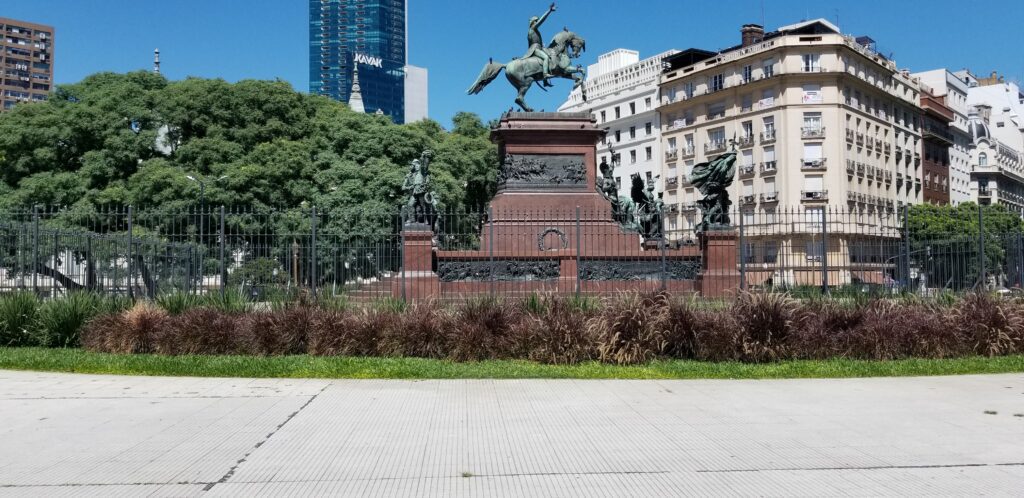Buenos Aires Highlights
Buenos Aires, the beautiful port and capital city, was the last stop on our South American adventure. Nothing like strolling the broad boulevards flanked by magnificent late 19th-century grand buildings. The city has a European feel to it with its diverse people and unique culture. This we will explore. Many visitors call it the “Paris of South America”.
We wanted to have a central location and selected the Buenos Aires Sheraton which is at two convenient metro stops. They have a nice pool and fitness center which is a plus after some serious sightseeing. Please visit Booking.com as I do to address your hotel and other travel needs. Save, save, and save.
Free Walking Tour # 1
9th de Julio Ave. Area
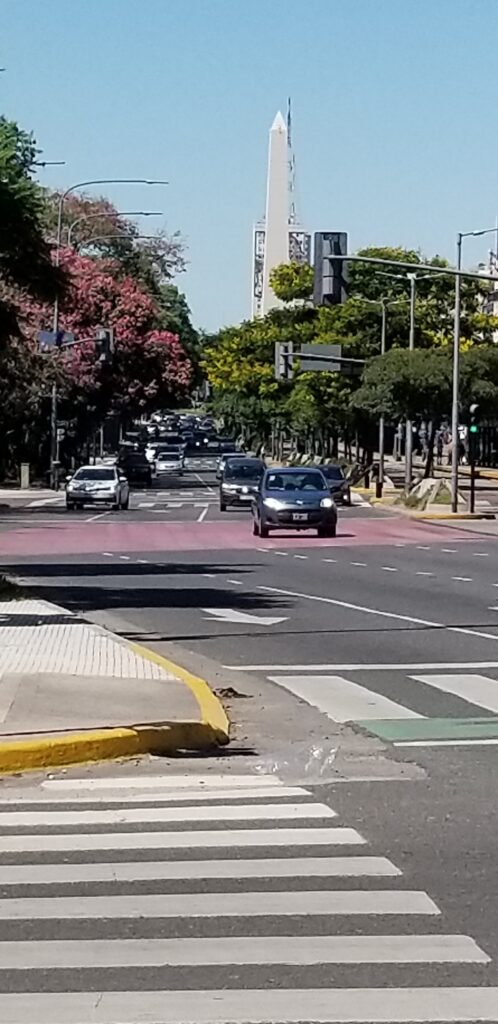
We decided to use free walking tours during our stay in Buenos Aires https://www.buenosairesfreewalks.com/ the first of which would be the morning three-hour tour of the Recoleta and Retiro areas. This starts off at the Teatro Colon (1908). This is one of the grand opera houses in the world. The greats of the music world have all performed here, Toscanini, Caruso, Pavarotti, Nurevey, etc. The grandeur of the opera house is enhanced by its location on the landmark 9 de Julio Avenue in the heart of the city. The theatre opened on May 25, 1908, with a performance of Verdi’s Aida. Teatro Colon soon became a must-musical venue rivaling La Scala (Milan) and the Metropolitan Opera House (New York).
Our next stop was the Templo Libertad (1932). Argentina has a large Jewish population, and this is one of the more prominent synagogues in the country. We continued on our tour crossing the world’s widest street, Avenue 9 de Julio, which is quite a feat for our tour group. The avenue is dominated by the Obelisco de Buenos Aires (1936)
Plaza San Martin Area
We next encountered Plaza San Martin which is the green oasis that every large city needs. San Martin is considered the liberator of Argentina. We still have some grand mansions still adjoining the park including the San Martin Palace (which is now part of the Foreign Ministry). We are fortunate that our hotel (The Sheraton) faces the plaza. The Kavanagh Building (1936) on the plaza is a great example of International Style and was the tallest building in Latin America at the time of its completion. It has 31 floors and is 390 feet in height ( 120 m.).
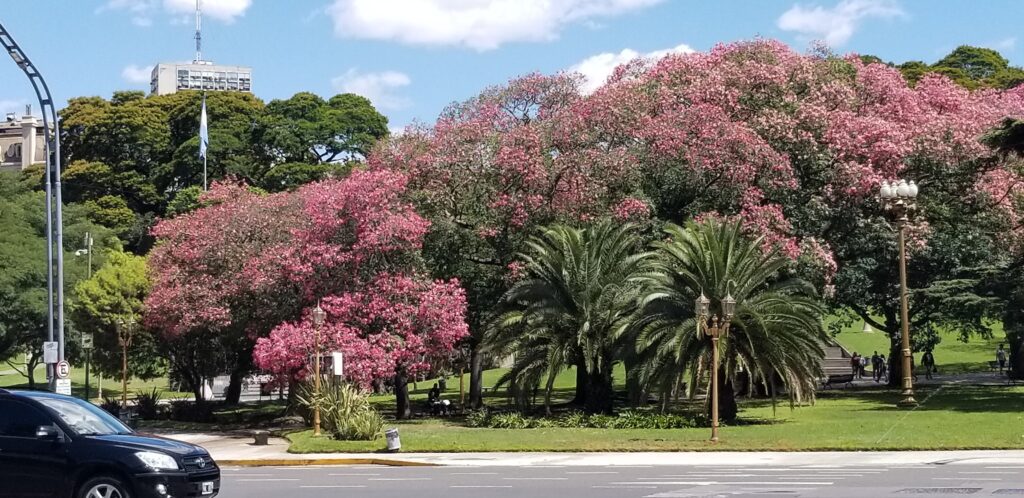
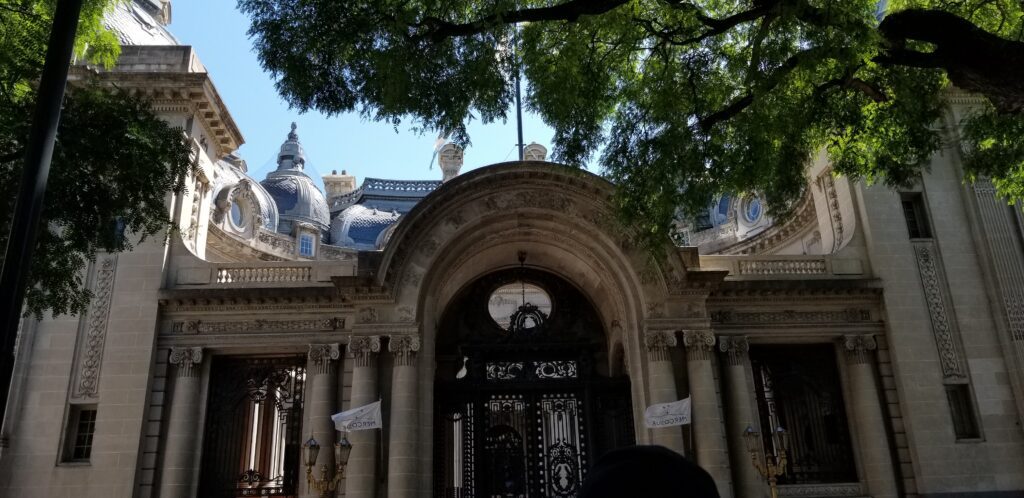
Recoleta Area
Continuing in the Recoleta area on Avenida Alvear, you will encounter many distinguished buildings including the magnificent Alvear Palace Hotel as well as posh mansions of the city’s elite. We finished up at the famous Recoleta Cemetery where Eva Peron is its most famous resident. If you go on the weekend as we did, you will see an Artisan Fair in the adjoining Plaza Alvear. I am always a sucker for these fairs.
Free Walking Tour # 2
We went on the San Telmo Tour which only runs on Sundays. This is a very colorful older part of Buenos Aires. The central focus is the Sunday Street Fair with lots of vendors selling all kinds of stuff. You get streets full of activities with lots of music and colorful characters. The area contains many historic structures that played a big part in Buenos Aires’ history. Plaza San Telmo is the center of the street fair where in addition to its vendors, you have a corner set aside for tango performers. We really enjoyed that.
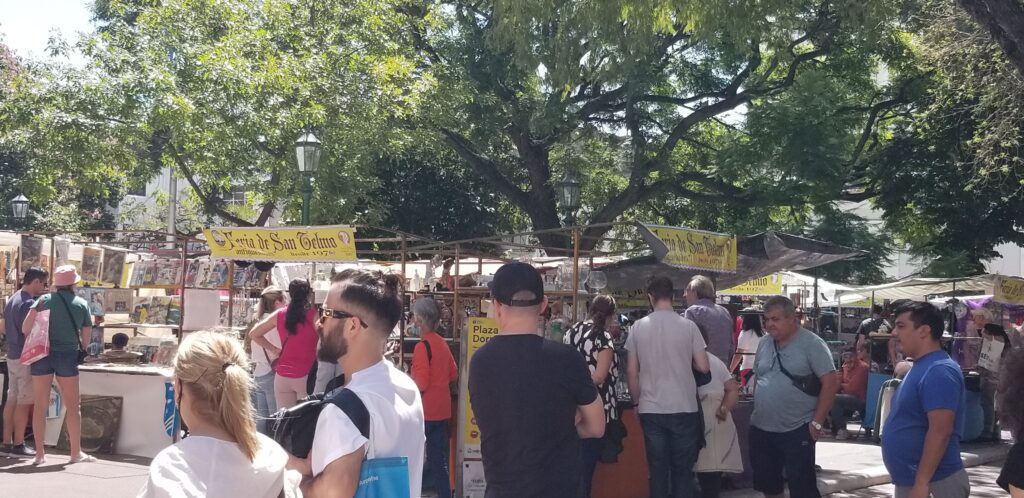
Free Walking Tour # 3
This is an afternoon 2.5-hour tour of the city center of Buenos Aires. where the tour focuses on the politics and history of the city. We started at the National Congress Building (1906) and made our way down Avenida de Mayo. Our guide gave us many insights into Argentinian history which were at times quite rocky. We saw the famous Cafe Tortoni (1898) which is modeled after Parisian cafes. It has been a gathering place for many writers and intellectuals. We finished up at the Plaza de Mayo. The plaza is famous for the Casa Rosada or Pink House. It became the Presidential Palace in the 1860s. The building is well known for its pink exterior.
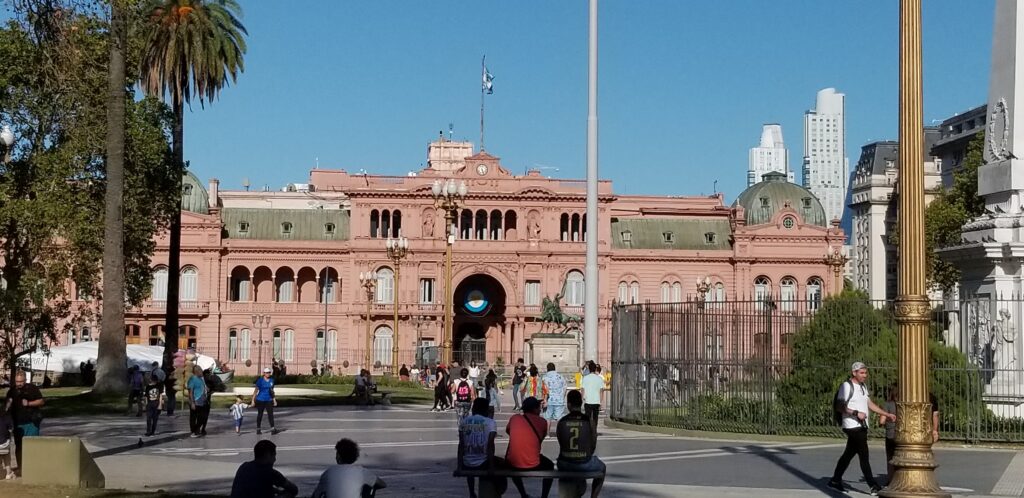
Buenos Aires Carnival
We made sure to attend the Buenos Aires Carnival Parade which takes place on the Avenida de Mayo, the evening before Ash Wednesday. As you might expect, this is quite colorful, loud, and enjoyable. You have carnival clubs ( referred to as Munga) participating in a parade ( known as Corso). The participants have flamboyant costumes, and intricate dance routines accompanied by drums and cymbals. They all seem to be amateur clubs from various neighborhoods. Do not miss this unique event.
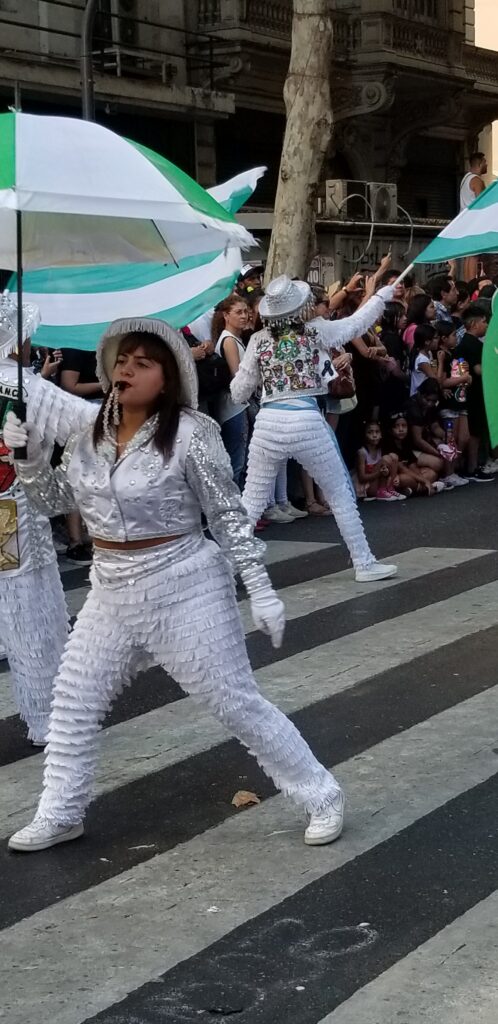
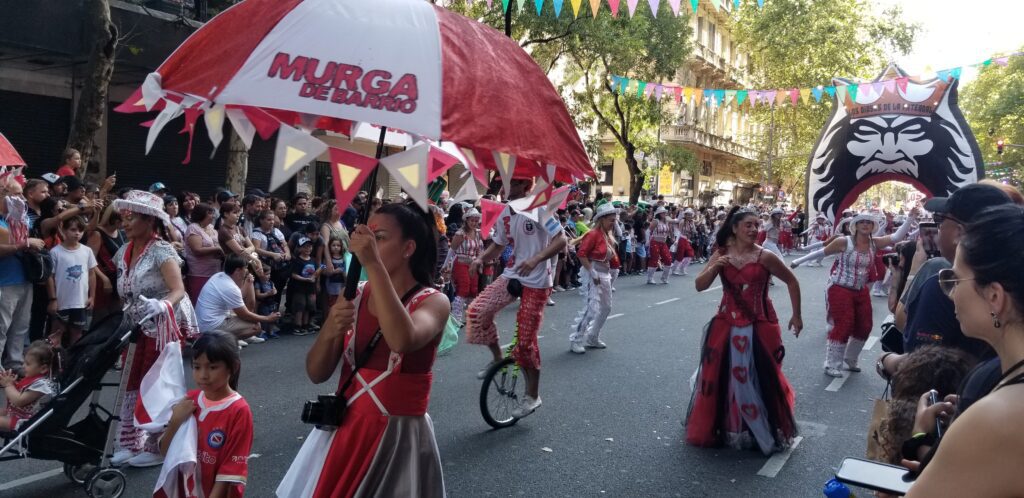
A Word from Steve
I have not meant to be a comprehensive guide to Buenos Aires and the recent visits to Sao Paulo, Asuncion, and Montevideo. You can view this as a curated look at some fascinating places. Other options are available from my friends at Viator

